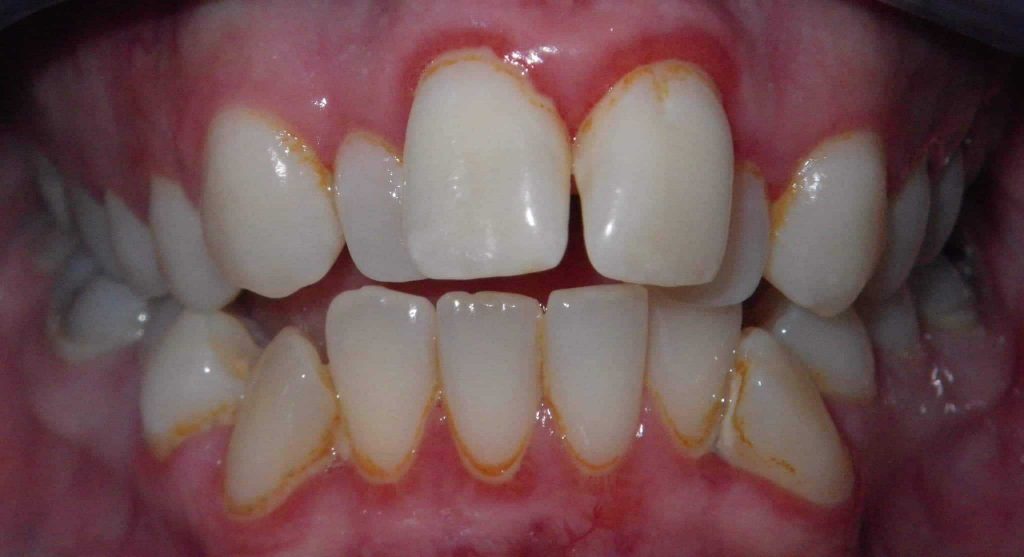Adults get only one chance at having a natural set of permanent teeth comprised of 32 individual devices. While some individuals are lucky enough to have the genetics required for inheriting a perfectly aligned smile filled with healthy white teeth, others may experience Class I Malocclusion as having a normal bite but where teeth can be crowded or crooked.
Teeth malocclusion is a common dental problem that can easily be corrected with the assistance of an orthodontist and the dental braces they may apply. While braces are the most common dental treatment for the issue, oral surgery is also an option. However, regardless of what cure is implemented, preventative dentistry to block the dental problem from forming in the first place is the best move possible. We have some insider tips so caregivers can closely monitor their charges to block any type of malocclusion from forming in the first place.
Stop Thumb Sucking
For a kid, a woobie and a thumb is a common vice and that can keep a child quiet and content for hours on end. While excessive thumb-sucking is nothing for a parent to be worried about when a kid is under the age of four, after that point in time, nipping the behavior in the bud is essential to prevent crooked teeth and oral overcrowding in both baby teeth and the permanent smiles that will appear over time.
Science has shown that there is a connection “…between the intensity and length of thumb-sucking and damage done to the teeth.” Kids who are hooked on the habit have increased odds of preventing the normal development of their palate. As a result the roof of the mouth can become malformed and result in malocclusion and the odds of a child needing to visit an orthodontist during their teenage years
Aging
Those who are fortunate enough to live to a ripe old age will have experiences and knowledge unbeknownst to their younger counterparts. In addition to those perks, elders may also experience the unfortunate side effect of shrinking jawbones that may result in oral overcrowding.
Jawbones are a living part of the skeletal system and the results of a study that lasted forty-years has shown that jaws can shrink over time and cause tooth overcrowding in senior mouths. In 1949, 30 dental students (who were approximately 20 years of age) Faculty of Dentistry at Malmo University made plaster molds of their mouths. Twenty years later, after the students were already fully licensed dentists, a second batch of molds were made. Forty-years after the very first molds were made, 18 remaining study participants had another mold yet. Researchers compared the complete mold sets with each other and found that over time, the lower jaw had become both shorter and thinner by several millimeters, resulting in tooth-crowding. (Expertanswer. “Teeth crowded in seniors, as jaws shrink.” ScienceDaily, 31 Oct. 2011. Web. 16 Nov. 2011.)
Caregivers responsible for individuals in their golden years should ensure that their charges see a dentist regularly so they can help manage any negative impact that can naturally result from the aging process.
Soft, Processed Foods
Chewing is a basic instinct that will allow humans (and other animals) to break down food and at the start of the digestion process. Teeth are incredibly tough and have been designed to break down nature’s bounties such as fruits, vegetables, whole grains and dairy foods. However, individuals who ignore the government’s Nutrition Plate and only eat diets high in soft, processed foods may be preventing their jaw from growing to its full length making the bone relatively small for their teeth and that can result in a malocclusion.
The findings have come from Dr. Noreen von Cramon-Taubadel from the University of Kent’s School of Anthropology and Conservation. The doctor compared the mandible shapes from 11 worldwide populations. Her research revealed that the lower jaw shape, (and the curves of the upper palate) was linked directly to diet and hunter-gatherers (as opposed to supermarket shoppers or agrarian types) had “longer and narrower mandible, indicating more room for the teeth to erupt correctly,” (http://www.sciencedaily.com/releases/2011/11/111122112032.htm).
The evolutionary shift is reflective of how societies have changed at large. While the right processed foods (such as jarred pasta sauce without sugar, whole-grain breads and cereals and low-fat, sugar free yogurts) can all make substantial contributions to a humans’ nutritional requirement, eating foods in their most natural state is a must for dental health. Whole fruits, vegetables, nuts and meat are all part of the equation that can help challenge a mouth and properly fuel a body.
Individuals struggling to find out what is causing the mouths of their loved ones (or themselves) to become too packed with teeth can get an accurate diagnosis and a list of remedies from a qualified dentist.

